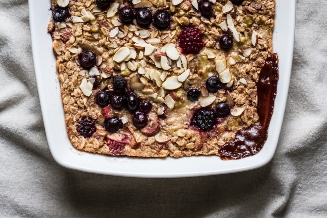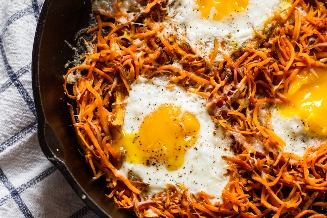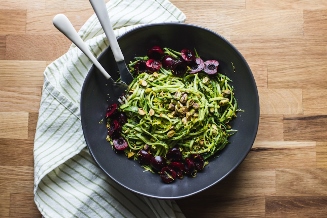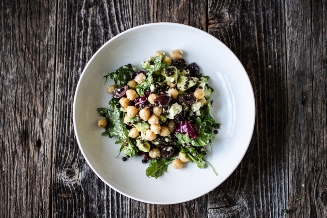Irish Soda Bread-ish
/Oy. This bread. I lost count of the trials it took before finally landing on a version I wanted to share. I don't really know what to call it, either. It's not traditional Irish soda bread, but it's not really like other types of bread or baked goods.
It falls in between Irish soda bread, drop biscuits, cornbread, and scones. That's why I finally decided on Irish Soda Bread-ish. Just like I'm Ir-ish.
I am also this funny in person.
I started out making this bread with almond flour, millet flour, and sorghum flour. The flavor was great but the texture just wasn't doing it for me. It was slightly gritty/grainy and turned slightly paste-like as you chewed. That sounds absolutely horrible. It was more than edible but just not what I wanted.
I then switched the almond flour to almond meal for a little more heartiness and swapped millet flour for out flour. The millet was definitely contributing to the grainy texture but the oat flour helped soften things up. Most gluten-free soda bread recipes call for starch and xanthan gum, which is probably what helps gives it a more traditional soda bread texture. While I have no problem with those ingredients, I try to bake using only whole-grain/nut flours as much as possible. I was determined to do what I could with the almond meal, oat flour, and sorghum flour.
Typically, Irish soda bread recipes also call for kneading the dough. But when I limited the amount of buttermilk to the point where I could knead the dough, it created a way-to-dense and dry loaf. Those were not edible.
I found that folding the wet and dry together worked the best. You don't want to overwork this dough. The ingredients should be just combined before scooping into the pan.
The dough is quite shaggy and on the sticky side, for sure. It has a lot of airiness to it, so be gentle when you transition it to the pan. If you spread it firmly to the edges the air pockets will fill and you'll have a much denser loaf. When you move it to the pan you barely have to do anything at all. A few light taps to help it spread and you're good to go.
It comes together in under 10 minutes and then takes about 30 minutes to bake. Definitely an easy bread to make and a fabulous breakfast option. It's very low in sugar and has a good bit of protein and fiber from the whole-grain (and almond) flours.
So what's the best topping for this non-traditional Irish soda bread?
Butter + jam.
Simply the best.
I have eaten my weight in this bread. I mean, really. It was bad. But oh so good.
While this may not be traditional Irish Soda Bread, I think you'll still approve.
Irish Soda Bread-ish
gluten-free
- 1 cup gluten-free oat flour
- 1 cup almond meal
- 3/4 cup + 2 tablespoons sorghum flour
- 2 tablespoons coconut sugar (or other granulated sugar)
- 1 teaspoon baking powder
- 1 teaspoon baking soda
- 1/2 teaspoon salt
- 3 tablespoons cold butter
- 1 large egg + 1 yolk
- 1 cup low-fat buttermilk
Preheat oven to 450° F. Grease a 9-inch cast iron pan or pie dish.
Place dry ingredients in a large bowl and stir together until combined. Chop butter and cut in to the dry ingredients with a pastry cutter or the back of a fork until evenly distributed and crumbly.
In a medium bowl, whisk together the milk and eggs. (Be sure oven is fully preheated before mixing wet and dry. As soon as the dough is mixed and placed in the pan it needs to go in the oven.) Make a well in the center of the dry ingredients and pour in the wet. Fold the dry and wet ingredients together with a wooden spoon until you no longer see dry flour. Avoid over-stirring.
Hold the bowl over your pan and gently push the dough into the center of the pan. It should be sticky and thick. Gently tap (do not pack down or firmly spread -- work lightly) the center of the dough to help it spread towards the outer edges of the pan. The dough should be about 1 inch from the outer edge. The dough will be very shaggy with an airy feel.
Bake at 450° for 5 minutes, then reduce heat to 350° and bake for 20-25 minutes. Bread shoudl be golden brown on the top and edges and when you tap it should sound sort of hollow and feel set.
Let cool for 10 minutes then slice while warm and top with butter and jam. Let fully cool before storing. Bread loses outer crustiness once stored.
Notes:
- I highly recommend making this recipe exactly as stated above for the best texture outcome.
- I like using Kerrygold butter here but regular butter will also do!
A large hunk of this bread, warmed, with 2-3 drippy eggs = breakfast perfection.
Ashley






























